Summary
Reliable computational predictions of flame spread and fire growth can assist in the design and selection of reduced flammability materials. Due to the complexity of fire physics and the large variability of flammable materials, it is necessary to develop efficient methods for determining material properties. Flammability data Automated Calibration Tools (FACT) is a suite of efficient automated Python scripts for estimating material properties from small scale tests. Previous work has demonstrated the effectiveness of FACT at determining kinetic and thermodynamic properties using thermogravimetric analysis (reaction mechanism and associated kinetics), differential scanning calorimetry (reaction thermodynamics), and micro-combustion calorimetry data (heats of combustion). Ongoing work extends these results to provide estimates of thermal conductivity using gram-scale slab gasification data. Each tool is verified (Fig. 1) against manufactured data and validated (Fig. 2) against experimental data for several polymers. The experimental data and resultant material properties are organized and stored within NIST’s Material Flammability Database. Summary presentations for each of these tools are provided below.
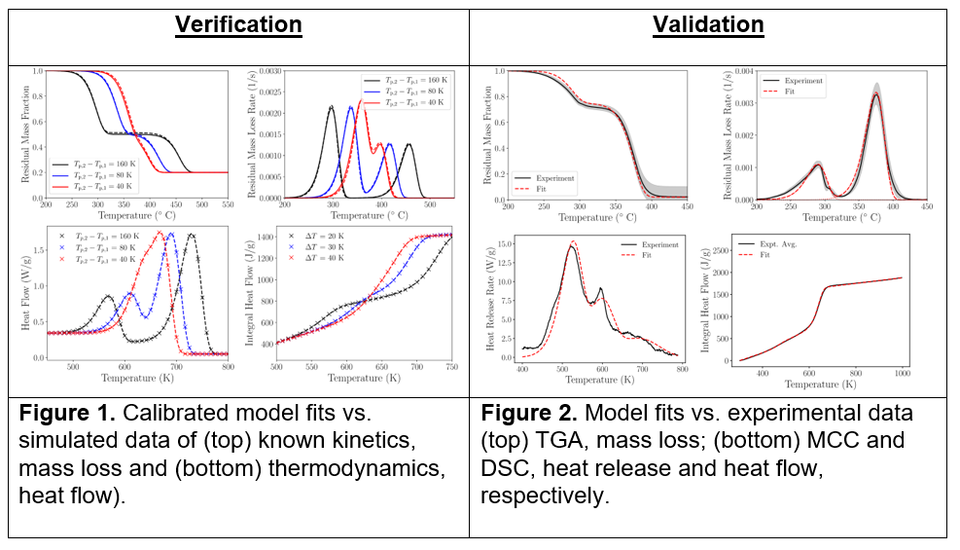
Description
Objective:
To develop open source, freely available tools for property calibration and maintain archived, version-controlled material property sets with demonstrated accuracy.
These tools should be:
Accurate: Parameters predict experimental data
Realistic: Values agree with physics
Efficient: Fast parameter evaluation (property determination in seconds)
Robust: Can handle complex behavior (e.g., multi-step decomposition)
Stable: Values do not vary
These tools are designed to determine the following material property values for comprehensive pyrolysis modeling:
- Reaction mechanism and kinetics (A, E, v, n)
- Heat capacities and heats of reaction (cp, hrxn)
- Heat(s) of combustion (total, ΔHc,tot , and for individual reactions, ΔHc,i)
- Heat transfer:
- Conductivity (k)
- Radiation absorption (α)
- Emissivity (ε)
Related Publications and Overview Presentations
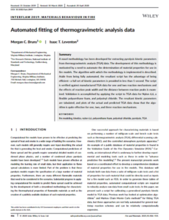
Leventon, I. and Bruns, M., Automated Fitting of Thermogravimetric Analysis Data, Interflam 2019, London, -1, [online],2020. https://doi.org/10.1002/fam.2849
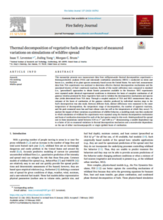
Isaac T. Leventon, Jiuling Yang, Morgan C. Bruns, Thermal decomposition of vegetative fuels and the impact of measured variations on simulations of wildfire spread, Fire Safety Journal, Volume 137, 2023. https://doi.org/10.1016/j.firesaf.2023.103762
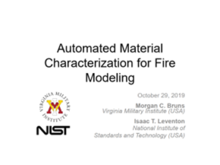
Bruns, M.C. and Leventon, I.T., “Automated Characterization of Pyrolysis Kinetics and Heats of Combustion of Flammable Materials,” FAA Fire & Cabin Safety Research Conference, 2019. [Download Presentation PDF]
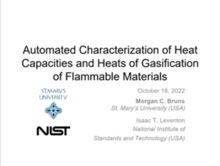
Bruns, M.C. and Leventon, I.T., “Automated Characterization of Heat Capacities and Heats of Gasification of Combustion of Flammable Materials,” FAA Fire & Cabin Safety Research Conference, 2022. [Download Presentation PDF]
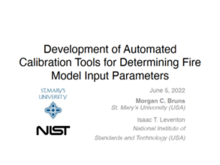
Bruns, M.C. and Leventon, I.T., “Development of Automated Calibration Tools for Determining Fire Model Input Parameters,” ACS, 2022. [Download Presentation PDF]
Forthcoming - Bruns, M.C. and Leventon, I.T., “Automated Characterization of Thermal Conductivity of Flammable Materials,” ACS, 2024.

